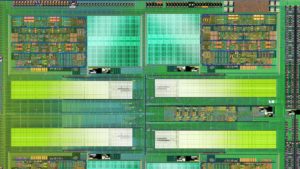Integrated Circuit Layout Design Copyright Infringement Case
In this article we will discuss a case of Integrated Circuit Layout Design Copyright Infringement between Brooktree v. Advanced Micro Devices.
Plaintiff Brooktree is a semiconductor chip company that specializes in the design, manufacture and sale of computer image displays. The defendant AMD is a competitor in the same industry. Between 1981 and 1986, Brooktree invested approximately $3.8 million to develop a semiconductor chip that can convert digital image information to analog image information at high speed. The integrated circuit layout design combines static random access memory (SRAM) and the function of the digital-to-analog signal converter (DAC) is used as a “color blender”, which greatly improves the speed and quality of color resolution., which can greatly improve the speed and quality of color resolution.
Brooktree’s witnesses suggest that the Integrated Circuit is a technological breakthrough that surpasses the boundaries that were previously thought impossible to surpass in terms of speed and performance. The core of the Integrated Circuit layout design is a SRAM with 10 transistors, and this cell is repeated 6,000 times in each column, accounting for approximately 80% of the entire chip area. But Brooktree later discovered that Advanced Micro Devices (AMD) copy the core unit in integrated circuit layout design, the SRAM with 10 transistors, and therefore filed an infringement lawsuit against AMD.
In its instructions to the jury, the District Court wrote that the Semiconductor Chip Protection Act not only prohibits the cloning of the entire IC layout design, but also prohibits the reproduction of the substantial part of the integrated circuit layout design. The essential part of the layout design refers to the part that reflects creativity and has commercial value. If such a part is copied, it may also constitute infringement. Therefore, in this case, to confirm that the infringement is established, Brooktree must prove that AMD’s layout design is substantially similar to the substantive part of its own layout design. When a very important part of a layout design is copied by others, although this part of the layout design is a relatively small proportion, it may constitute a substantial similarity. So, it doesn’t take AMD to copy the entire part of the Brooktree to form a Integrated Circuit Layout Design Copyright Infringement.


